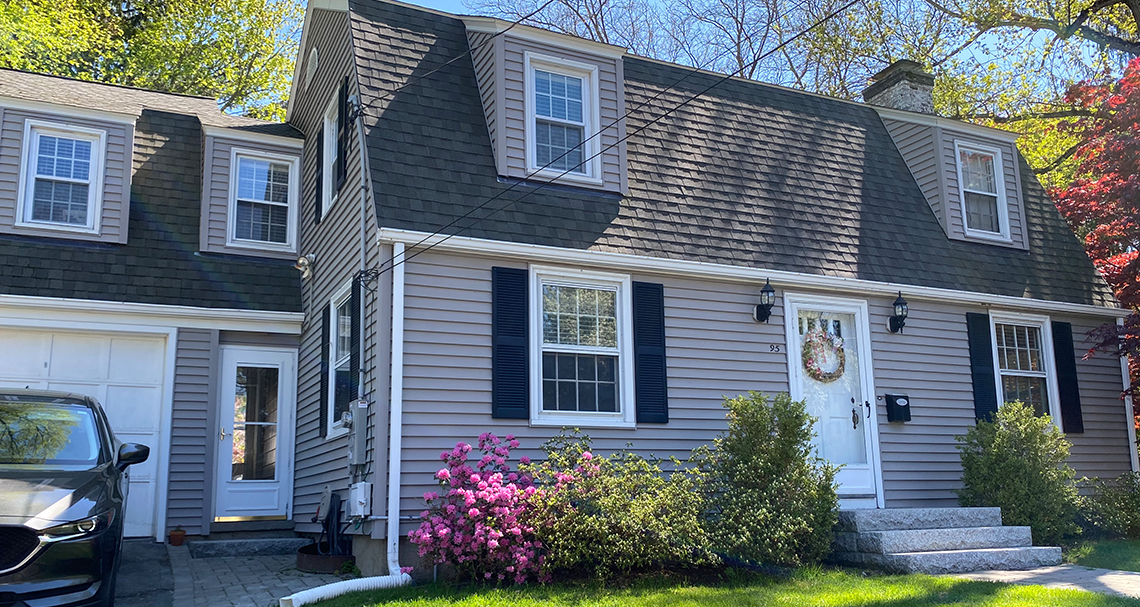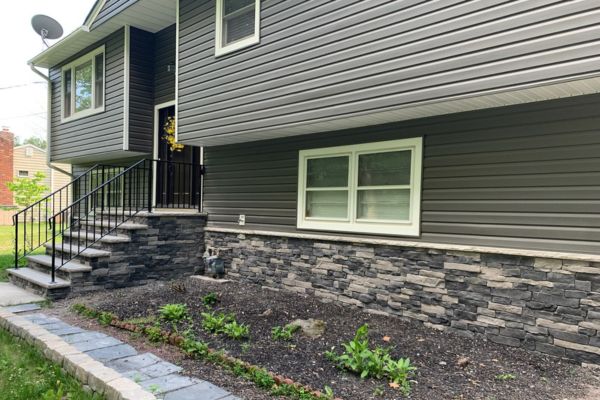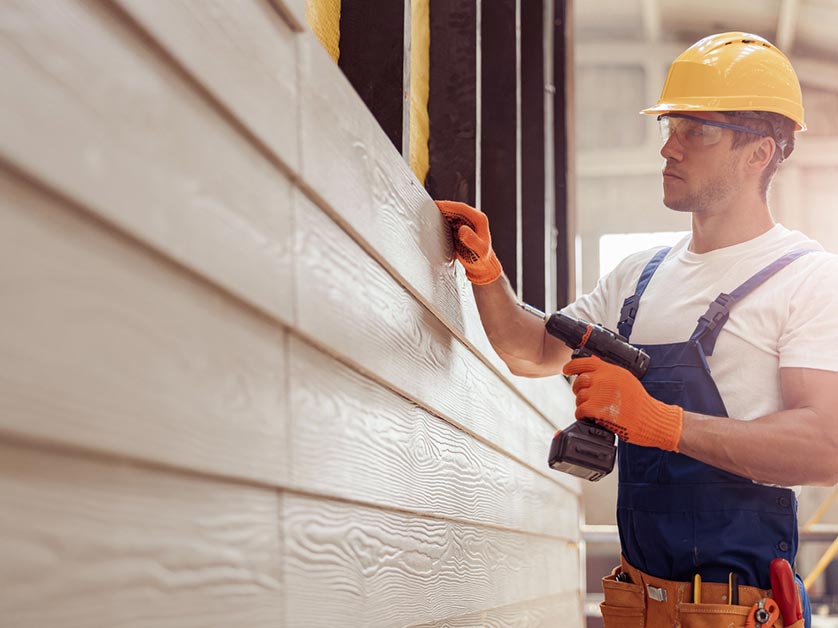The Important Overview to the Numerous Sorts Of Siding and Their Special Advantages
In the realm of home renovation, choosing the right exterior siding is an important decision that impacts both aesthetic allure and practical efficiency. The range of materials readily available, such as timber, plastic, fiber concrete, steel, and block, each deal one-of-a-kind benefits that cater to different needs and preferences. Understanding these distinctions can dramatically enhance the durability and worth of a property - morris siding contractor. However, with many choices to consider, which house siding material really sticks out for your particular project? Exploring these choices can bring about informed decisions that straighten with both design and functionality.
Timber Home Siding
Timber siding, a prominent option for property outsides, uses a classic visual that incorporates natural appeal with structural stability. This siding product is offered in different styles, including clapboard, tiles, and board-and-batten, permitting property owners to tailor their façade to match their design choices. Wood house siding is usually crafted from resilient types such as cedar, redwood, or want, which are understood for their strength and capability to withstand environmental stressors.
Among the key benefits of wood house siding is its outstanding insulation properties, which can add to energy performance and lower heating expenses. Furthermore, timber home siding is eco-friendly, making it an environmentally pleasant option when sourced sustainably. Routine upkeep, including paint or discoloration, can prolong its life expectancy and boost its appearance, allowing homeowners to preserve the all-natural appeal of the timber.
However, prospective disadvantages include sensitivity to parasites, rot, and weather damage, requiring sufficient therapy and maintenance - morris siding contractor. Regardless of these worries, when correctly taken care of, wood home siding can offer a stunning and sturdy option that boosts the personality of a home while using a cozy, inviting atmosphere

Plastic House Siding
Plastic siding has actually become a leading selection for property owners looking for a low-maintenance outside option that incorporates resilience and affordability. This functional material is crafted from polyvinyl chloride (PVC), making it resistant to different climate condition, including wetness and UV rays. Because of this, vinyl siding does not warp, rot, or discolor, ensuring durable aesthetic charm.
Among the primary advantages of vinyl house siding is its comprehensive array of styles and colors, enabling homeowners to accomplish the desired look for their residential or commercial property without the demand for frequent repainting. Furthermore, vinyl home siding is simple to mount, which can significantly minimize labor expenses during building and construction or renovation tasks.
Plastic siding likewise adds to power performance. Many options feature insulation backing, which improves thermal efficiency, aiding to keep comfy interior temperatures and possibly decreasing power bills. Its smooth surface helps with simple cleaning, needing just routine cleaning with a yard pipe to eliminate dirt and debris.
Fiber Cement Siding
Fiber cement exterior siding has gained traction amongst building contractors and home owners alike as a result of its exceptional combination of toughness and aesthetic convenience. Composed of a combination of concrete, sand, and this page cellulose fibers, this exterior siding choice is engineered to endure severe weather condition conditions, consisting of high winds, heavy rain, and temperature variations, making it a resilient option for domestic outsides.

Among the main advantages of fiber cement house siding is its resistance to insects, such as termites, and its non-combustible nature, offering boosted fire safety. morris siding contractor. Additionally, it is readily available in a broad selection of structures, styles, and shades, permitting homeowners to accomplish their wanted visual without compromising efficiency
An additional benefit is its low maintenance demands; fiber concrete exterior siding typically requires painting or discoloration every 5-10 years, which is less regular than various other products. Its longevity contributes to a reduced total price of possession, as it lowers the need for frequent repair work or replacements.
Eventually, fiber cement home siding stands for an exceptional financial investment for those looking for a resistant, attractive, and versatile exterior option, combining both form and function to boost the home's visual appeal.
Metal Exterior Siding
The allure of metal siding depends on its durable sturdiness and contemporary aesthetic charm, making it a favored choice for modern style. Readily available in products such as light weight aluminum and steel, steel home siding uses a variety of colors and finishes, permitting home owners to achieve a customized look that enhances their layout vision.

Energy efficiency is another significant advantage, as numerous steel home siding items are made with insulation alternatives that aid manage interior temperature levels. This can bring about lowered energy expenses in time. Furthermore, metal exterior siding is commonly recyclable, making it an ecologically pleasant selection for sustainability-minded home owners.
The site installment procedure for steel exterior siding can be fairly uncomplicated, leading to a quicker turnaround time for construction tasks. Overall, steel home siding incorporates functionality and style, making it a practical alternative for those seeking a aesthetically appealing and enduring exterior coating.
Block and Stone Siding
Block and stone siding sticks out Learn More Here as a classic choice that boosts the visual charm of any home. Understood for their durability and reduced maintenance, these products supply an exceptional roi while raising the home's curb charm. Available in numerous colors, appearances, and patterns, brick and rock can be tailored to match varied architectural designs, from conventional to modern-day.
Among the primary advantages of block and stone siding is their energy effectiveness. Both products possess natural protecting buildings that assist manage interior temperatures, possibly reducing heating and cooling expenses. In addition, they offer exceptional fire resistance contrasted to various other siding options, adding to improved safety and security.
An additional advantage is their long life. Block and rock can last for decades, frequently needing very little maintenance past periodic cleansing. Unlike timber siding, they are unsusceptible insects and rot, guaranteeing a resilient outside that stands up to the components.
Verdict
In recap, the selection of exterior siding dramatically influences a home's visual appeal, power effectiveness, and maintenance needs. Each type of siding-- whether timber, vinyl, fiber concrete, block, or metal and stone-- uses distinct advantages tailored to different homeowner preferences and environmental problems.
One of the primary advantages of timber home siding is its excellent insulation residential or commercial properties, which can add to energy performance and lower heating prices. Additionally, timber house siding is biodegradable, making it an ecologically friendly alternative when sourced sustainably.One of the primary benefits of steel house siding is its resistance to various environmental variables.Power efficiency is an additional significant advantage, as lots of steel siding products are created with insulation alternatives that help regulate indoor temperature levels. Each kind of exterior siding-- whether wood, vinyl, fiber brick, steel, or concrete and rock-- supplies one-of-a-kind benefits tailored to various property owner preferences and ecological problems.